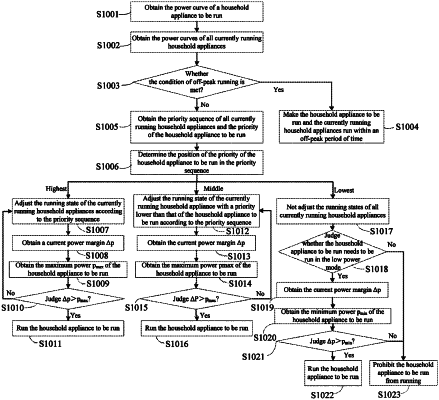| CPC H04L 12/2821 (2013.01) [G05B 15/02 (2013.01); H04L 12/12 (2013.01); H04L 12/40039 (2013.01); G05B 2219/2639 (2013.01); G05B 2219/2642 (2013.01); Y04S 20/222 (2013.01); Y04S 20/242 (2013.01)] | 10 Claims |

|
1. A computer-implemented control method for a home system, comprising:
obtaining a power curve of a household appliance to be run, wherein the power curve of a household appliance to be run has peaks and troughs;
obtaining power curves of all currently running household appliances, wherein the power curves of all currently running household appliances have peaks and troughs, respectively;
judging whether the household appliance to be run and the currently running household appliances meet an off-peak running condition by judging whether each of the peaks of the power curve of the household appliance to be run is interleaved with each of the peaks of each of the power curves of the all currently running household appliances, wherein if each of the peaks of the power curve of the household appliance to be run is interleaved with each of the peaks of each of the power curves of the all currently running household appliances, it is determined that the household appliance to be run and the currently running household appliances meet the off-peak running condition; and
if the power curve of the household appliance to be run and that of at least one currently running household appliance meet the off-peak running condition, connecting the household appliance to be run into a circuit in which the currently running household appliances run and making the household appliance to be run and the currently running household appliance run within an off-peak period of time.
|